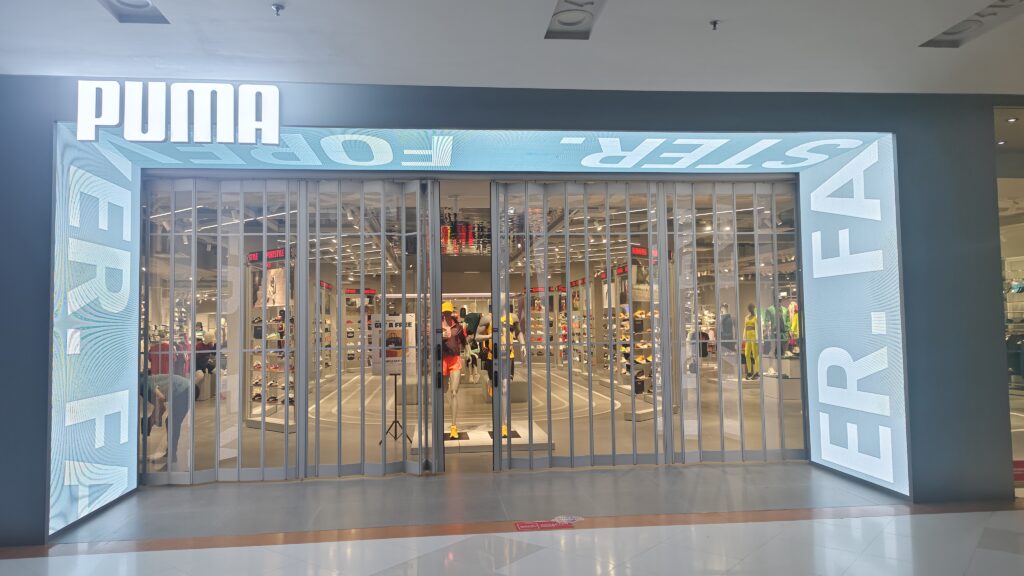An LED signage display for storefronts is a common type of outdoor advertising equipment widely used in stores, hotels, shopping malls, supermarkets, and various commercial establishments. It serves the purpose of attracting customers, promoting sales, and enhancing brand visibility.
Types of LED Storefront Displays (Based on Pixel Pitch)
- P10 and Above: Displays with larger pixel pitch are suitable for long-distance viewing. They are typically used for high-placed signage, offering cost-effective solutions.
- P6 to P8: Medium pixel pitch displays, ideal for mid-range viewing distances, offering higher resolution suitable for more detailed signage needs.
- P4 and Below: Small pixel pitch displays are perfect for short-distance viewing, providing high-definition images and videos, commonly used by high-end retail brands for storefront signage.
Advantages of LED Storefront Displays
- Eye-catching: LED displays are known for their high brightness, vivid colors, and combination of static and dynamic content, which quickly grabs the attention of passersby.
- Flexible Content: Unlike traditional printed or lightbox ads, LED displays allow content to be updated instantly, making it adaptable to promotional campaigns and rapidly changing brand messages. This also reduces the cost of creating and updating advertisements.
- 24/7 Operation: LED displays are highly durable in outdoor environments, with excellent weather resistance. They are waterproof, dustproof, and UV-resistant, making them suitable for long-term use in all weather conditions.
- Energy-efficient: With advancements in LED technology, modern LED displays are more energy-efficient, consuming less power while providing a long lifespan, ultimately reducing maintenance costs.
- Remote Control: Many LED storefront displays offer remote control features, allowing advertisers to update content in real-time via the internet or mobile devices. This makes managing content easier and more convenient.
Installation and Maintenance of LED Storefront Displays
Installation Environment
- Before installation, it’s crucial to assess the structural capacity of the environment, light intensity, and protection grade requirements to ensure the screen operates safely and efficiently.
- Choose the appropriate pixel pitch and brightness based on the installation location to achieve optimal visual performance.
Maintenance Methods
- Regular Cleaning: Since LED storefront displays are exposed to outdoor environments, dust and pollutants accumulate easily. Regular cleaning of the screen surface helps maintain good display quality.
- Circuit Inspection: Routinely check for loose connections or power failures to ensure the display continues operating smoothly.
- Waterproofing Measures: For outdoor LED displays, especially in rainy areas, it is essential to ensure that cables, connectors, and other components are adequately waterproofed.
Key Considerations for Purchasing LED Storefront Displays
- Pixel Density: Choose an appropriate pixel density based on the viewing distance. For close-up viewing, smaller pixel pitch screens like P4 are recommended. For long-distance viewing, P10 or P8 can be suitable.
- Brightness: The display must have a high level of brightness to ensure clear visibility even in strong daylight conditions. Typically, outdoor LED displays should have a brightness level of 5000-7000 cd/m².
- Protection Rating: For outdoor use, LED displays must offer excellent protection against water, dust, and impact. A protection rating of IP65 or higher is generally recommended.
- Lifespan: When selecting an LED display, pay attention to the quality of the LED components and power supplies. High-quality displays have a lifespan of up to 100,000 hours, allowing long-term use while reducing the frequency of replacements and maintenance costs.

